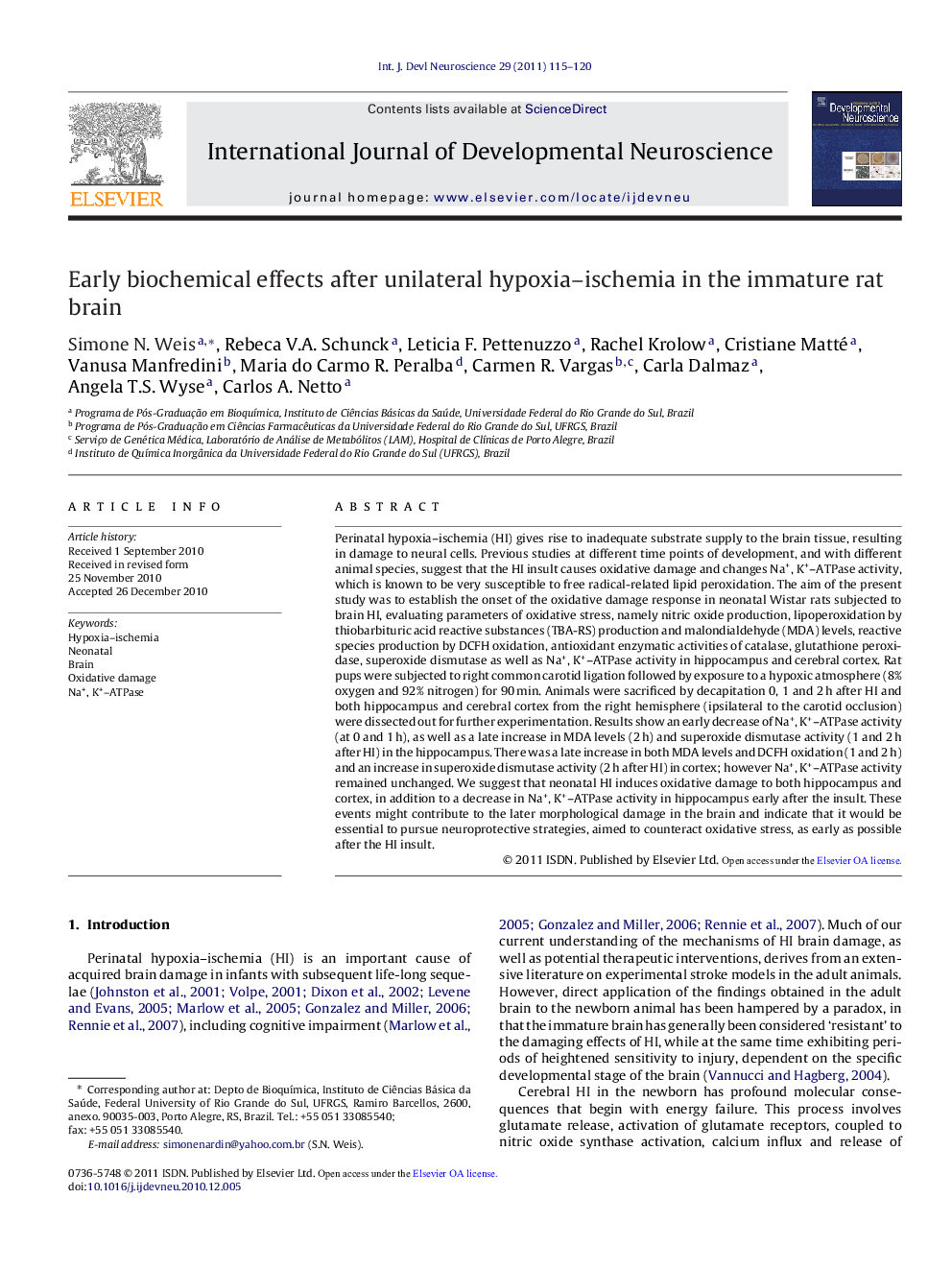| Article ID | Journal | Published Year | Pages | File Type |
|---|---|---|---|---|
| 5893968 | International Journal of Developmental Neuroscience | 2011 | 6 Pages |
Perinatal hypoxia-ischemia (HI) gives rise to inadequate substrate supply to the brain tissue, resulting in damage to neural cells. Previous studies at different time points of development, and with different animal species, suggest that the HI insult causes oxidative damage and changes Na+, K+-ATPase activity, which is known to be very susceptible to free radical-related lipid peroxidation. The aim of the present study was to establish the onset of the oxidative damage response in neonatal Wistar rats subjected to brain HI, evaluating parameters of oxidative stress, namely nitric oxide production, lipoperoxidation by thiobarbituric acid reactive substances (TBA-RS) production and malondialdehyde (MDA) levels, reactive species production by DCFH oxidation, antioxidant enzymatic activities of catalase, glutathione peroxidase, superoxide dismutase as well as Na+, K+-ATPase activity in hippocampus and cerebral cortex. Rat pups were subjected to right common carotid ligation followed by exposure to a hypoxic atmosphere (8% oxygen and 92% nitrogen) for 90Â min. Animals were sacrificed by decapitation 0, 1 and 2Â h after HI and both hippocampus and cerebral cortex from the right hemisphere (ipsilateral to the carotid occlusion) were dissected out for further experimentation. Results show an early decrease of Na+, K+-ATPase activity (at 0 and 1Â h), as well as a late increase in MDA levels (2Â h) and superoxide dismutase activity (1 and 2Â h after HI) in the hippocampus. There was a late increase in both MDA levels and DCFH oxidation (1 and 2Â h) and an increase in superoxide dismutase activity (2Â h after HI) in cortex; however Na+, K+-ATPase activity remained unchanged. We suggest that neonatal HI induces oxidative damage to both hippocampus and cortex, in addition to a decrease in Na+, K+-ATPase activity in hippocampus early after the insult. These events might contribute to the later morphological damage in the brain and indicate that it would be essential to pursue neuroprotective strategies, aimed to counteract oxidative stress, as early as possible after the HI insult.
